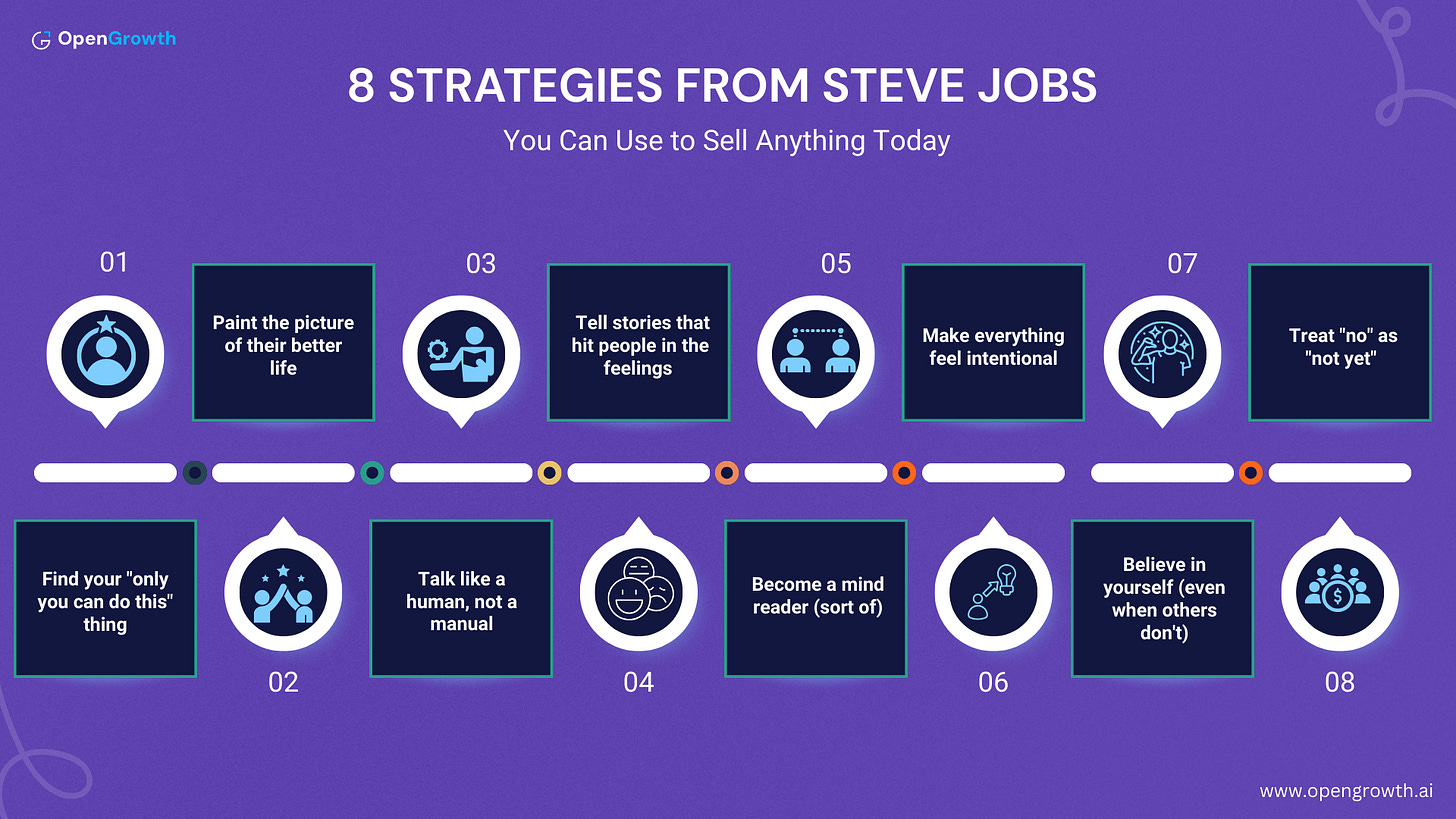8 Strategies from Steve Jobs You Can Use to Sell Anything Today
Steve Jobs had a rare ability to inspire people to desire something they didn’t even know they needed. From the Macintosh to the iPhone, his genius wasn’t just in invention but in how he presented and positioned those inventions. Below are the key lessons and practical tips from his approach that you can bookmark and apply to your own work.
1. Sell a Vision, Not Just a Product
Jobs didn’t pitch gadgets; he sold possibilities.
Tip: When presenting your offer, frame it around the outcome it enables.
Instead of: “Our software has 10 new features.”
Try: “This helps you save 10 hours a week so you can focus on growth.”
2. Storytelling as a Sales Superpower
Every Apple launch felt like a story with a setup, climax, and big reveal.
Tip: Use the 3-act storytelling model in pitches.
Act 1: Show the problem.
Act 2: Build tension by highlighting why current solutions fall short.
Act 3: Reveal your product as the hero.
3. Anticipate Customer Needs
Jobs famously said Apple worked backward from customer experience.
Tip: Build an “empathy map” for your audience. Ask:
What are they thinking?
What are they struggling with?
What are they hoping for?
4. Simplicity Wins
Jobs turned complexity into clarity. His presentations used clean slides with just one key point.
Tip: Apply the rule of three. Break down your pitch or product benefits into three simple, memorable points.
5. Build Experiences, Not Just Products
From Apple stores to packaging, every touchpoint was intentional.
Tip: Map your customer journey. Ensure each step from first click to unboxing feels seamless and memorable.
6. Bold Ideas Attract Believers
Jobs didn’t water down ideas to please everyone. He polarized and inspired.
Tip: When shaping your message, decide who this is not for. Clarity on your non-audience makes your true audience more loyal.
7. Persistence Is the Real Differentiator
Jobs’ comeback to Apple after being fired shows how resilience fuels greatness.
Tip: Create a personal resilience toolkit. Note three actions you will take when faced with rejection such as reviewing past wins, calling a mentor, or refining your pitch.
8. Talk Like a Human
Jobs’ language was simple, clear, and relatable. He didn’t overwhelm people with jargon, he spoke in a way that anyone could understand.
Tip: Test your pitch on someone outside your industry. If they don’t “get it” right away, simplify your words until it feels conversational.
Final Takeaway
Steve Jobs’ approach combined vision, storytelling, empathy, simplicity, design, boldness, and persistence. Each of these can be turned into a practical tool.
✅ Save this as your quick reference when preparing your next sales pitch or product launch. Ask yourself:
Am I selling an outcome, not just a feature?
Is my message simple enough to stick?
Does my customer journey feel like an experience?
The answers could be the difference between just another product and the next breakthrough.
Curious how these strategies can drive growth for your startup?



